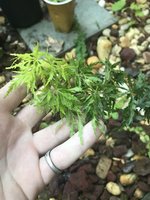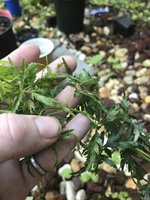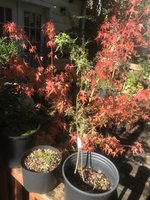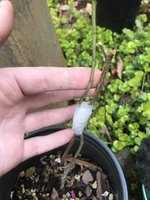It is hard to say when is too late as I don't know your growing season. I use approach grafts because it does not matter if the graft unites right away. Even if the graft takes months both plants are sustained by their own roots for as long as it takes so it probably does not really matter when you make this sort of graft.
This sapling is a little over a foot tall. My theory is if I did an approach graft half way up into more hardwood if it doesn’t take I’ll still have the lower portion if it does in fact pull through this winter?
The beauty of approach graft is you do have the fallback position is it does not work as expected. your sapling is much bigger than the seedlings I was working with. Most of the seedlings were grafted because they were slower growing than normal and were grafted while less than 6" tall and while the stems were still soft but the technique can be used on stems at any age.
Unfortunately I have not kept photos of any I have done an it is too early in the season here to have suitable material to do a demo for you. The basic technique is lightly scrape the bark on one side of each seedling where they will join then tape the 2 together. The younger the stems the lighter I cut as you don't want to compromise circulation, just enough to stimulate callus formation which will unite the 2 stems.
Young, active wood will unite quicker than older lignified section.






